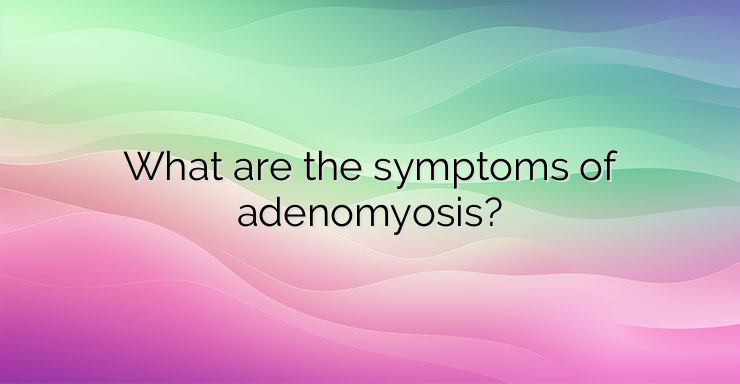Adenomyosis of the uterus is a benign disease of the uterus, and more precisely of the uterine wall. In this condition, tissue similar to the lining of the uterus migrates into the muscle layer of the uterus. It differs from endometriosis in that the tissue develops outside the uterine cavity. Women of childbearing age are particularly affected. For a long time, adenomyosis was considered a subform of endometriosis and was called “internal endometriosis” because the growth takes place from the wall of the uterus. Because little research has been done on adenomyosis so far, there is no data on how widespread the disease is. It is estimated that about 4 to 30% of all women are affected. It is also commonly thought that approximately 1 in 10 women are affected by this condition, although the evidence is still unclear. Signs and symptoms of uterine adenomyosis About 30% of all adenomyosis patients have no pronounced symptoms. In such cases, the disease is diagnosed accidentally during a gynecological examination. If symptoms do occur, they are often non-specific, making diagnosis difficult. The symptoms that appear are not always related to uterine disease. Signs of adenomyosis include: Heavy and painful menstruation; Pelvic pain that may occur during menstruation or intercourse. This pelvic pain can be chronic; Intestinal discomfort, such as diarrhea, flatulence, cramps, painful bowel movements; Pain in the back, radiating to the buttocks and thighs; Pain when urinating, similar to a bladder infection; Fertility disorders. In order to make the diagnosis, it is necessary to rule out health problems – fibroids, polyps, endometriosis, and others, and to perform ultrasound and MRI examinations. In addition, the uterus is tender and enlarged on gynecological examination. Differences between uterine adenomyosis and endometriosis The signs of adenomyosis are similar to those of endometriosis. For this reason, it is not surprising that women with endometriosis often also have adenomyosis. In endometriosis, tissue similar to the lining of the uterus is found, which is produced outside of it – in the ovaries or intestines. In adenomyosis, the tissue is found in the muscle layer of the uterine wall. References: https://www.cuerpomente.com/salud-natural/tratamientos/dolor-menstrual-intenso-es-adenomiosis-causa_10444 https://pubmed.ncbi.nlm.nih.gov/33321760/


Leave a Reply